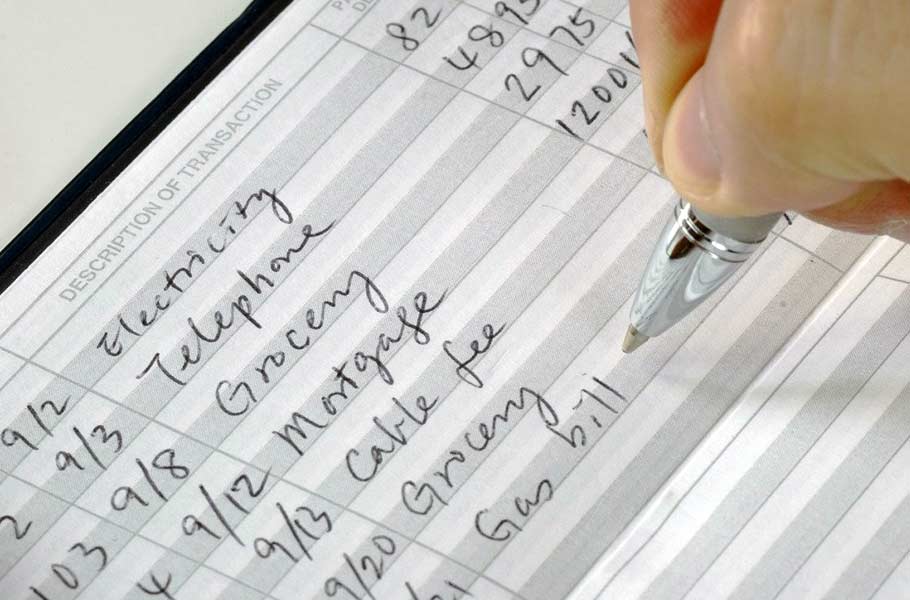Opening a checking account for your teen is more than just a convenience—it’s a way to help them learn how to manage money responsibly. Whether you’re transferring allowance, teaching them how to budget, or setting them up for financial independence, the right account can make all the difference.

Nearly half of U.S. teens already have a bank account, according to Fidelity, which shows that parents recognize the value of getting kids started early. But with so many options out there, how do you know which one is best? Some accounts offer high interest rates, while others focus on parental controls or seamless app integrations.
This guide breaks down the top teen checking accounts available, highlighting key features, benefits, and what to look for when choosing the right one for your child.
9 Best Teen Checking Accounts
While there are many options available for teen checking accounts, parents frequently choose to establish accounts for their teens at their own primary banking institutions. This list includes many top national banks.
Their inclusion isn’t necessarily due to their teen checking accounts offering the highest interest rates or the most features. Instead, their comprehensive services for adults and strong reputations make them a viable consideration.
1. Copper
Copper Bank is an FDIC-insured online bank designed to help kids and teens learn how to manage money. It offers a spending account with a debit card, financial education tools, and even investing features.
2. USAA Youth Spending Account
The USAA Youth Spending Account is a joint account that parents or legal guardians can open with a child of any age.
It provides a debit card with customizable spending limits and access to a large ATM network. Once the child turns 18, the account automatically converts to a USAA Classic Checking account.
3. PNC Bank Student Banking
PNC Bank offers the Virtual Wallet Student account for teens and young adults ages 16 and up. Those under 18 must open a joint account with a parent or guardian.
The account includes separate spending and savings features, with tools to help teens manage money responsibly.
4. Wells Fargo Clear Access
Wells Fargo Clear Access is designed for teens ages 13 and up, as well as customers who need a fresh start with banking.
It’s considered a “second chance” bank account, but the lack of overdraft charges and no monthly fees also makes it great for teens just learning financial responsibility.
5. Chase First Banking
Chase First Banking is a kid-friendly checking account designed for children ages 6 to 17.
It comes with built-in parental controls, allowing parents to monitor spending, set limits, and easily transfer funds. To open an account, parents must have a qualifying Chase checking account.
6. Capital One MONEY Teen Checking Account
The Capital One MONEY Teen Checking account is a fee-free checking account designed for kids and teens.
It offers parental oversight while giving teens the flexibility to manage their own spending. Unlike some teen accounts, it doesn’t require a parent to have a Capital One account.
7. Bank of America Advantage SafeBalance
The Bank of America Advantage SafeBalance account is a simple, checkless checking account that can be opened jointly with a parent for teens ages 13 and older.
It offers fee-free banking for students under 25 and prevents overdrafts by declining transactions that exceed the available balance.
8. Connexus Credit Union Teen Checking Account
The Connexus Credit Union Teen Checking account is a high-yield checking account for teens ages 10 to 17.
It offers strong interest rates, no monthly fees, and access to a nationwide network of ATMs. Upon turning 18, the account transitions to a standard Connexus checking account.
9. Alliant Credit Union Teen Checking
Alliant Credit Union Teen Checking is a fee-free checking account designed for teens ages 13 to 17. It offers interest on balances, free ATM access, and overdraft protection when linked to a savings account.
Parents serve as joint account holders, allowing them to monitor and manage the account alongside their teen.
Prepaid Debit Cards for Kids
If you feel your child or teen isn’t ready for a checking account, you might consider a prepaid debit card for kids, instead. Products like Greenlight, Cash App, Revolut<18 are not your typical banking account, but are prepaid debit cards that provide kids with easy access to money.
1. Greenlight
Greenlight is a prepaid debit card designed for kids and teens, offering strong parental controls, customizable spending limits, and educational money management tools.
Parents can assign chores, set savings goals, and even offer cashback rewards on purchases, depending on the plan chosen.
2. Cash Card
The Cash Card is a free, customizable debit card available through Cash App for users ages 13 and up.
It allows teens to send and receive money, make purchases online or in stores, and take advantage of discounts through Cash App’s Boost program. A parent or guardian must approve the account for users under 18.
3. Revolut
Revolut offers a prepaid debit card for kids and teens under 18, providing parental controls, spending limits, and budgeting tools.
Parents can assign tasks for earning money, set allowances, and monitor transactions in real-time. The card is linked to the parent’s Revolut account, making transfers quick and seamless.
Features to Look for in a Teen Checking Account
Choosing the right teen checking account means finding one that balances flexibility, security, and affordability. Here are some key features to consider when making your decision.
No Monthly Fees or Minimum Balances
A teen checking account shouldn’t come with unnecessary costs. Look for an account with no monthly maintenance fees and no minimum balance requirements, so your teen can manage their money without worrying about extra charges.
Low or No Fees
Avoid accounts with hidden fees, overdraft penalties, or ATM charges. Many teen accounts automatically decline transactions that would overdraw the balance, preventing costly fees while encouraging better money management.
Linked Savings Options
Some accounts offer savings features like round-ups on purchases or savings buckets for specific goals. If you want your teen to develop smart financial habits early, look for an account with built-in savings tools and competitive interest rates.
Parental Controls
Many teen checking accounts allow parents to set spending limits, approve or decline transactions, and monitor activity through a mobile app. If you want more oversight, choose an account with strong parental controls and customizable alerts.
Mobile and Online Banking
A user-friendly mobile app is essential. Most teen-friendly accounts offer separate logins for parents and teens, allowing easy transfers, spending tracking, and budgeting tools from a smartphone.
Direct Deposit Availability
If your teen has a part-time job, they may need direct deposit. Some accounts even offer early access to paychecks, making it easier to manage their money efficiently.
Seamless Transition to an Adult Account
Some teen accounts automatically convert to standard checking accounts at 18, eliminating the need to open a new account later. This can be a helpful feature if your teen is heading to college or entering the workforce.
By prioritizing these features, you can choose a teen checking account that fits your child’s financial needs while giving them room to learn and grow.
Pros and Cons of Bank Accounts for Teens
As you evaluate the features of these teen checking accounts, you might wonder if it’s even worthwhile to open a checking account for your teen. Opening a teen bank account can help them develop good personal finance habits early on.
Let’s consider other benefits and drawbacks of checking accounts for teens.
Pros
- Conveniently transfer funds from your linked account, wherever you are
- Teach children and teens about saving and investing
- Teach the basics of using a mobile banking app
- Build financial responsibility
- Money is protected by the Federal Deposit Insurance Corporation up to $500,000 for joint accounts
Cons
- Teens unfamiliar with budgeting may spend more with a debit card handy
- Some financial institutions charge fees
- Your teen may lose their debit card, creating a security risk
- You may need to make a minimum deposit to open the account
When all is said and done, the benefits of teen checking accounts far outweigh any inconveniences. Just make sure to choose a banking account with no minimum deposit requirements or monthly service fee at a bank or credit union that offers responsive customer service.
Also, make sure you can keep tabs on your teen’s spending through alerts or a mobile app.
How to Choose the Right Teen Checking Account
Finding the right teen checking account depends on your child’s needs, your banking preferences, and the level of control you want as a parent. Here’s how to make the best choice.
Decide on the Type of Account
Start by considering whether a traditional checking account, a prepaid debit card, or a combination of checking and savings works best. If you prefer in-person banking, look for an account with branch access. If your teen is comfortable with digital banking, an online-only account with mobile tools may be a better fit.
Compare Fees and Costs
A teen checking account shouldn’t come with unnecessary fees. Look for an account with no monthly maintenance fees, no overdraft charges, and free access to a large ATM network. Some accounts even offer interest on balances, which can encourage your teen to save.
Consider Parental Controls and Spending Limits
If your teen is new to managing money, parental controls can be helpful. Some accounts allow you to set spending limits, restrict certain purchases, and receive alerts for transactions. Others provide a hands-off approach, giving teens more financial independence.
Evaluate Security and Overdraft Protection
Teens are still learning how to budget, so it’s important to choose an account that won’t charge expensive fees if they overspend. Some accounts decline transactions that exceed the balance, while others offer overdraft protection linked to a savings account.
How to Open a Teen Checking Account
Opening a teen checking account is a simple process, but you’ll need to have the right information ready.
Gather the Required Information
Most banks and credit unions require a parent or guardian to be a joint account holder for teens under 18. You’ll need:
- Your teen’s date of birth and Social Security number
- Your own identification and Social Security number
- A minimum opening deposit, if required
Fund the Account and Activate the Debit Card
Once the account is open, you can transfer funds from an external account or deposit money using mobile check deposit. If your teen has a job, they may also be able to set up direct deposit for their paycheck.
When the debit card arrives, help your teen activate it by calling the number on the card or setting up a PIN at an in-network ATM. Encourage them to choose a secure PIN that’s easy to remember but difficult for others to guess.
By taking these steps, you’ll set your teen up for financial independence while ensuring they have the tools to manage their money responsibly.
Frequently Asked Questions
Do teen checking accounts have monthly fees?
Most of the best checking accounts on our list do not have maintenance fees, service fees, or ATM fees.
Can a minor have a checking account?
Yes, a minor can open a checking account jointly with a parent or guardian.
What happens to a teen checking account when I turn 18?
Some of the best teen checking accounts automatically convert to regular checking accounts when the child turns 18.
Can I open a teenage bank account online?
You can open many of the checking accounts on this list online. However, to open a Wells Fargo Clear Access account for a person under the age of 18, you’ll need to visit a brick and mortar branch.
What is the minimum age to open a teen checking account?
Some teen checking accounts are available to children as young as six years or eight years old, as long as they are opened jointly with a parent or guardian. Teens 18 and older can open an account on their own. Many student checking accounts with no fees for students between 18 and 25.
How much money should you keep in your teenager’s checking account?
How much money you keep in your teen’s checking account will depend on various factors. How much can you afford to pay in allowance or fees for chores? Is your child earning any money of their own they can deposit? Do they typically receive cash gifts for birthdays or holidays?
Keep in mind, funds in teen checking accounts are FDIC insured up to the federal limit of $250,000 per account holder, per account type. In the case of jointly held accounts with a parent and a minor, these accounts are insured for $500,000 in total, or up to $1 million if you have linked checking and savings.
















